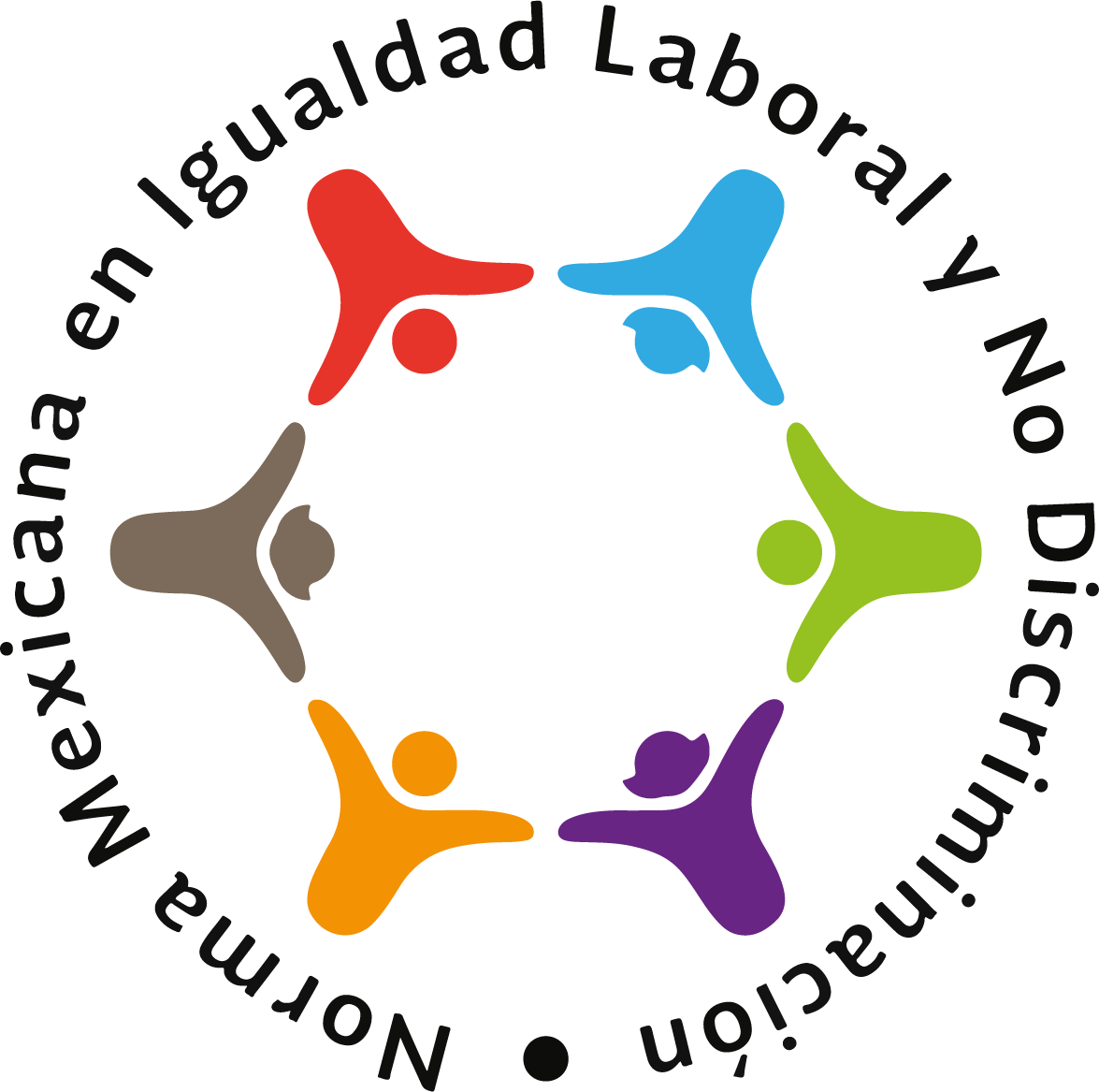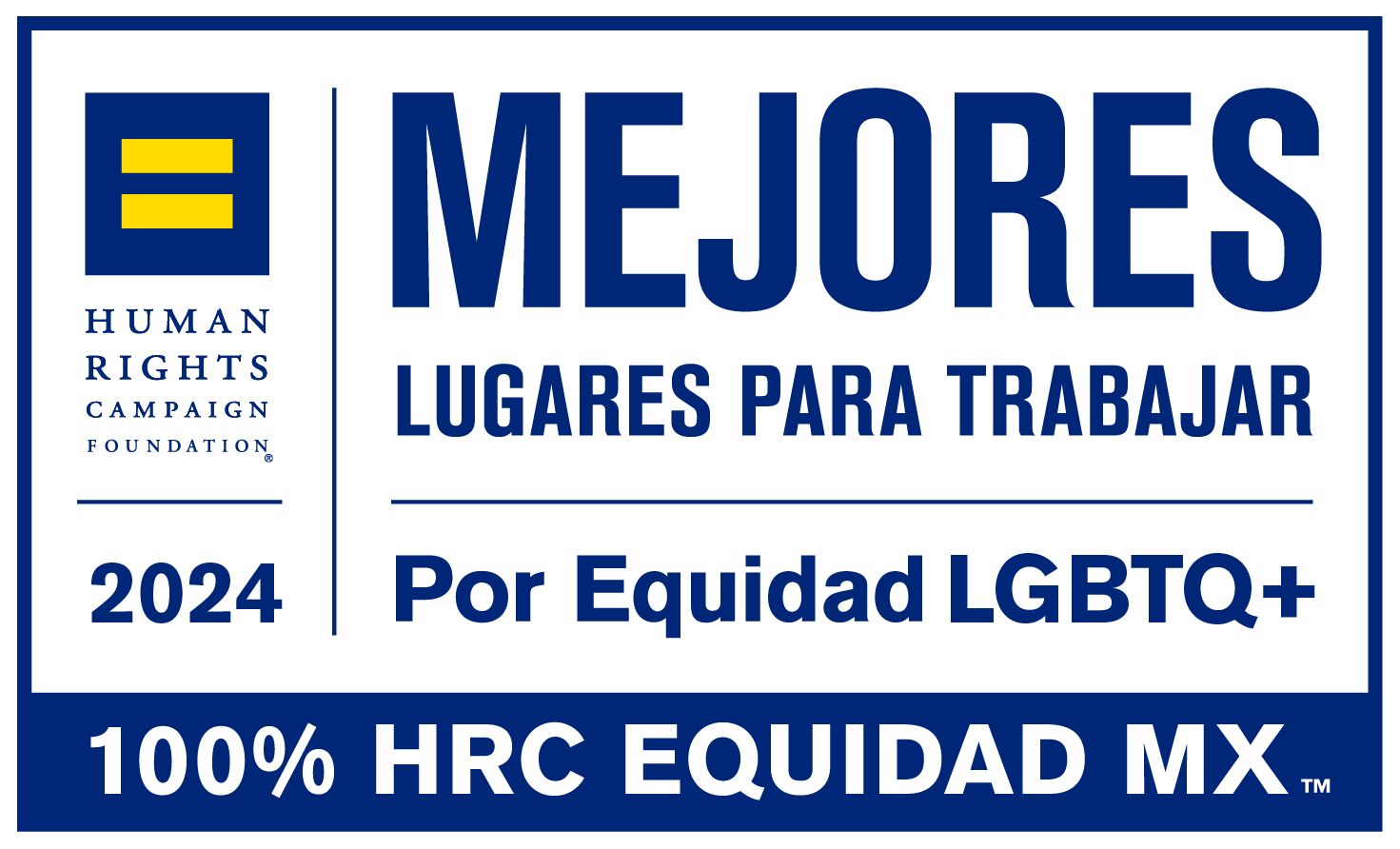Electoral Registry
The IFE is in charge of one of the main activities to guarantee the integrity of the electoral process: the conformation, updating and refining of the permanent registry of citizens entitled to vote.
1. The Federal Registry of Voters
2. Basic Instruments of the Federal Registry of Voters
3. Permanent Actions for Updating and Refining the Federal Registry of Voters
4. Coverage and Reliability of the Electoral Roll and the Voters Lists
1. The Federal Registry of Voters
The exact and timely registration, as well as the updating and permanent refinement of the diverse instruments that contain the names and personal information of all Mexican citizens that hold the right to vote, constitutes an essential requirement to guarantee the transparency and reliability of the electoral processes.
In Mexico, the vote is universal, free, secret, direct, personal and not transferable. All persons with Mexican nationality, by birth or by naturalization, who are 18 years of age or older, and have an honest way of living, have the right to vote. However, in order to exercise this right, the law establishes certain additional requirements such as registration of the citizen in the Federal Registry of Voters and possession of a photo-voting card, which is issued free of charge by the Federal Electoral Institute.
The electoral registry in Mexico is of an active nature, that is, it is responsibility of the citizens who fulfill the requirements, to attend, carry out and complete their registration in person before one of the field offices or modules set up for this purpose by the IFE throughout the country.
In any case, the registration process is verified by an accurate geographic-electoral frame in accordance to the voters’ home address within the national territory which also determines the place where, as a general rule, the citizens must vote. The specific territorial site is called electoral section, which is the basic geographical unit into which the national territory is divided for electoral purposes. According to the law, an electoral section is made up of a minimum of 50 and a maximum of 1,500 voters; within the limits of each section, a polling booth or site must be installed for every 750 registered voters.
It is important to point out that the registry of voters is federal, which implies that it is also used for local elections. The use of the instruments from the Federal Registry of Voters for such purpose is formalized through collaboration agreements between the IFE and the local governments and electoral authorities.
As previously mentioned, during the federal election of 2006, Mexican citizens residing abroad were able to vote for the first time to elect the President, and they did so by means of a postal vote, which constituted an innovation for the Mexican electoral system, since voting within the national territory must be done personally in the polling sites especially enabled for this purpose.
Since the mechanism to vote abroad and its implications to the electoral registry procedures are limited to the presidential elections, there will be no special procedure of registration for the federal midterm elections of July 2009.
2. Basic Instruments of the Federal Registry of Voters
The Federal Registry of Voters is made up of four fundamental instruments, which are clearly differentiated: the General Catalogue of Voters, the Electoral Roll, the photo-voting card, and the voters lists with photographs.
a) General Catalogue of Voters
The General Catalogue of Voters is a database that includes basic information (full name; place and date of birth; age and gender; current address and time of residency; occupation; and if applicable, the number and issuing date of naturalization certificate) of Mexican men and women over the age of 18. This information is obtained and updated from the application of the total census technique, that is, by means of house to house interviews in the whole national territory and with the purpose of making up a reliable database on the population entitled to vote.
b) Electoral Roll
The Electoral Roll is a database containing the name and information of all Mexican citizens who besides being included in the General Catalogue of Voters, have formally and individually requested their inclusion in the Roll. The application has to be presented in person before a field office of the Federal Electoral Registry in official forms that should include the signature, fingerprint and photograph of the interested party.
There is a permanent office in every district of the national territory, and during a specific period of the year, that is the intensive annual campaign from October 1, to January 15; there are complementary provisional units, both mobile and fixed, in the whole country. The interested party can go to any field office or unit that corresponds to his/her home address.
Citizens who are living within the national territory and are physically unable to go to the registration offices to enroll themselves may apply for registration in writing, annexing the documents that accredit them as handicapped. It is worth mentioning that the documents, information and reports that citizens supply to the Federal Registry of Voters are strictly confidential and may not be disclosed, except in exceptional cases foreseen and regulated by the law.
c) Photo-voting Card
The photo-voting card issued free of charge by the IFE to all citizens that have requested to be included in the electoral registry is an essential document to exercise the right to vote. In exceptional cases clearly foreseen by the law and for the purpose of voting within the national territory, a citizen who does not carry and show his/her photo-voting card on the day of the elections is not allowed to cast his/her vote.
In order to guarantee its reliability and inviolability, the IFE produces photo-voting cards using the information from the applications included in the Electoral Roll, in a centralized way and taking a number of security measures. The card is delivered to citizens about 20 days after submitting their application, and contains the following information:
- State, municipal section and city, which correspond to the home address of the voter.
- Electoral section where, as a rule, the voter living within the country should vote.
- Full name, address, gender and age of the citizen.
- Population Registration Code (CURP by its acronym in Spanish).
- Year of issuing and expiration.
The issuing of the photo-voting card began near the end of 1991, and the security mechanisms that guarantee its inviolability have been gradually and systematically reinforced. After the legal reforms adopted by the end of 2007, photo-voting cards no longer have an unlimited validity, and in the future, they will only be valid for a period of ten years after which, a replacement must be requested. These reforms also establish the inclusion of the CURP.
d) Voters Lists
The voters lists are the lists which contain the names and photographs of the persons who are included in the Electoral Roll, and to whom photo-voting cards have been issued and delivered. Voters lists are the basis for verifying the election since they are available in the voting sites to identify the voters attending to cast a vote. They are key instruments in the process of verifying the elections, as only citizens who have been registered in these lists and who have a photo-voting card may exercise their right to vote.
The voters lists are made up and created according to geographical criteria (state, district, municipality and electoral section) and they are sorted alphabetically. The photograph included in the voters lists is identical to that of the current card of every voter, and for this reason a voter cannot vote if he/she shows a card for which a reposition has been requested for any reason. This measure is an additional mechanism to guarantee the security and reliability of the voting.
Besides, the voters lists with photograph are printed on a safety paper especially made for the IFE that prevents forgery. In order for them to be used on election day, booklets containing the voters lists with photograph are bound and delivered according to the polling site to which they correspond. The front cover of every booklet includes geographical information allowing its proper identification as well as the number of citizens included in the list, divided by gender.
3. Permanent Actions for Updating and Refining the Federal Registry of Voters
The electoral legislation considers a series of procedures and actions which hold the purpose of updating and refining permanently the diverse instruments that make up the Federal Registry of Voters, in such a way as to perfect it and keep at all times its levels of accuracy, precision and trust.
The pertinence of these actions and the level of complexity of the challenges to be faced, are due the geographic, demographic and socio-cultural characteristics of the country. Mexico has a territorial extension of 2 million square kilometers, it displays a great diversity and contrasts in terms of its topography and climate, and has a population over 100 million people, with a distribution pattern which is characterized by concentration in urban areas and very dispersed or scattered population in rural areas which are difficult to access.
Additionally, about two million Mexicans come of age each year (citizen status, and inherent political rights); another two million change address, and there are about 300 thousand deaths within the universe of registered voters. All this affects significantly the making-up and the updating of the electoral instruments.
Despite the fact that the diverse instruments that make-up the electoral registry are permanently conformed, revised, refined and updated, and that voters may apply for their registration or the rectification and updating of their personal information practically at all times, the law establishes certain time restrictions on this possibility according to the elections.
For ordinary federal elections (which take place every three years), citizens may apply for their inclusion in the General Catalogue of Voters or in the Electoral Roll starting the day after the ordinary federal election took place (they invariably do so the first Sunday in July of the corresponding year) and up to January15 of the year in which the next election will take place. That is, a citizen may apply for his/her inclusion for approximately 30 continuous months between one election and the next. It is important to point out that Mexican citizens that on the year of the federal election come of age (become 18 years old) between January 16 and election day, should apply for their inclusion no later than January 15.
Besides, the law establishes that every year (from October 1, and until January 15, of the following year) there should be an intensive summoning and orientation campaign for the citizenry in order to update the General Catalogue of Voters. This campaign promotes that all citizens apply for their registration in the Electoral Roll; the replacement of their photo-voting card in case of loss or the updating and issuing of a new card when there has been a change of address or expiration after the ten year period.
With the purpose of keeping the general catalogue and the Electoral Roll updated, the law establishes the possibility of the Registry of Voters applying the partial census method in districts or specific sections, when the IFE’s General Executive Board decides it as necessary.
In the same way, it is foreseen that the Registry of Voters obtains from the bodies of public management at federal and state levels all the information required to register any changes that may affect those lists. Within this context, the Civil Registry should inform the Federal Electoral Institute on the decease of all citizens within 10 days of the date of expedition of the death certificate. The same period has been established for the judges who determine on the suspension of political rights, declaration of absence, or presumption of death of a citizen; as well as for the Secretary of Foreign Affairs to testify for the issuing or cancellation of naturalization letters, the issuing of citizenship certificates and the reception of resignations of citizenship.
In any case, the documents that are related to the cancellation of applications and suspension of citizens from the Electoral Roll will be under the custody of the Executive Directorship of the Federal Registry of Voters 8DERFE by its acronym in Spanish) and its bodies at state and district levels.
Now, and as a result of the recent reforms in the matter, citizens included in the Electoral Roll must notify any change of address within the first 30 days, to the nearest office of the Federal Electoral Institute in order to cancel their previous registry, to request a new card with their updated geo-electoral information and to be included in the voters list corresponding to their new address, for them to vote in the nearest voting site that corresponds to such address. When a change of address is notified and while an updated card is issued, the citizen can preserve the first card for identification purposes.
In case of not having obtained their photo-voting card in a timely fashion, of not appearing in the voters list of the section which corresponds to their home address, or when being included or excluded from it unduly, citizens may apply for the issuing or rectification before the office of the Federal Electoral Institute responsible for the inscription in the lists. These applications may be submitted at any time during the two years previous to the federal election. For the issuing or replacement of the voting card, the law also imposes temporary restrictions during election year.
Also as a result of the recent reforms, voters may consult in every district office of the IFE, an electronic system to verify their correct inclusion in the Electoral Roll and lists of voters and if needed, request the proceeding amendments. The parties have permanent access to the Electoral Roll and the lists of voters databases, exclusively for revision purposes, but are not entitled to use this information in any other way. During the two years prior to federal elections and during a two-month period, which starts on March 25, political parties may make comments to the DERFE about the incorrect registration or exclusion of citizens in the Electoral Roll or lists of voters.
The DERFE should examine all the observations submitted by the political parties, and incorporate, the modifications that result legally valid, and also inform the General Council as well as IFE’s National Surveillance Commission no later than May 15. Political parties may challenge the report from the DERFE before the Electoral Tribunal.
The year of the federal elections, the DERFE should hand in to each of the political parties a magnetic copy of the voters lists in alphabetical order and by corresponding section to each one of the 300 electoral districts. In this case, the political parties may present no later than April 14, the comments on the lists, pointing out facts and concrete individual cases. In that same way, the DERFE must make the corresponding corrections and inform the General Council and the National Surveillance Commission no later than May 15, and political parties may challenge such report before the Electoral Tribunal.
If the report is not challenged, or once the Tribunal has settled the challenge, the General Council has to hold a session to declare that the Electoral Roll and the voters lists that will be used in the next elections are valid and definitive. Based on this, the DERFE makes up and prints out the definitive voters lists and proceeds to distribute them in such a way as that the voters list of each section will be in the hands of the corresponding polling site directive board.
4. Coverage and Reliability of the Electoral Roll and the Voters Lists
In June 1990, within the framework of the political-electoral reform that would end two months after with the enactment of a new electoral legislation and to guarantee the highest degree of precision and trust for the Electoral Roll to be used in the forthcoming elections, the national political parties and the federal government agreed unanimously to make up a completely new Electoral Roll, that is, without considering any pre-existing registry or list and through the application of a total census method within the whole national territory.
To comply with this agreement the IFE made an enormous effort to make up in only eight months (November 1990 to July 1991) one of the largest databases in the world. Over an estimated number of 45 million Mexicans over the age of 18, the general catalogue of voters included 42.5 million. Besides, it was possible to have 39.2 million fulfilling the requirements of registration into the Electoral Roll and at the end to issue a photo-voting card to about 36.6 million citizens.
Although the electoral legislation considered some specific measures for the inclusion of the photograph in the voting card, due to time limits and technical and budgetary restrictions it was not possible to issue a photo-voting card for the federal elections of 1991 with these requirements. However, after the election, the national political parties reiterated their interest in fulfilling this legal mandate.
In July 1992, the IFE’s General Council approved the final model of the photo-voting card that included the new security elements in order to make it practically forgery-proof. In a synchronized fashion with the refinement program, the one related to the new voting card began in November 1992 and concluded, for the federal elections of August 1994, in July of that same year. Over a universe of about 50 million Mexicans entitled to vote, it was possible to have 47.5 million of them registered in the Electoral Roll and that 45.8 million voters obtained their new photo-voting card (nearly 92 percent of Mexicans within voting age and 96 percent of those in the Electoral Roll).
Because of the strong requirements set out at that time, to verify the coverage levels, precision and consistency of the electoral instruments that would be used in the federal elections of 1994, 36 different audits and verifications were carried out, which reported altogether a reliability of over 96 percent. Since then, it is a common practice to carry out sample and periodic verifications to assess the coverage level, precision and consistency of the electoral instruments.
Between 1994 and 2009, the DERFE has conducted, under the supervision of the National Surveillance Commission, ten audits based on sample methods. The general purpose has been to asses the Electoral Roll, the photograph voting-card and the voters list as well as the registration conditions of the citizens living within the country. Even when the concept and statistical design of each one has varied according to the specifics of the information to obtain, during this period a national verification project was implemented by means of two sample polls. One poll was expressly designed to measure the coverage level of the Electoral Roll among the citizens residing in the country, and the other one to asses certain aspects related to the quality of the information from registered citizens.
This project has been reinforced as both polls contribute with information, which besides confirming the features of the electoral instruments, allow the orientation of the refining and updating programs that the IFE carries out permanently. In general terms, the results obtained from the nine audits carried out until 2008 have confirmed the essential features of the Federal Registry of Voters and its instruments: its high levels of coverage, accuracy and reliability. The verification process of 2009 will end in May and will supply the General Council of the IFE with information to judge the validity and decisiveness of the roll and voters list to be used in the federal elections of July 2009.
Regarding the federal elections of 2009, the following chart presents the information regarding the distribution of citizens registered in the Electoral Roll and in the voters list distributed by gender and age, in accordance with the information updated up to May 1, 2009, which is very close to the final one The General Council of the IFE will validate:
Distribution by Gender
| Electoral Roll | Voters List | |
| Women | 40 292 967
(51.78 %) |
40 129 550
(51.79 %) |
| Men | 37 525 066
(48.22 %) |
37 354 835
(48.21 %) |
| Total | 77 818 033 | 77 484 385 |
Distribution by Intervals of Age
| Electoral Roll | Voters List | |||
| Age | Citizens | Percentage | Citizens | Percentage |
| 18 | 1 186 462 | 1.52 | 1176379 | 1.52 |
| 19 | 1778184 | 2.29 | 1763499 | 2.28 |
| 20 a 24 | 9857840 | 12.67 | 9805082 | 12.65 |
| 25 a 29 | 10068300 | 12.94 | 10025366 | 12.94 |
| 30 a 34 | 10022668 | 12.88 | 9980178 | 12.88 |
| 35 a 39 | 9447555 | 12.14 | 9409418 | 12.14 |
| 40 a 44 | 7888069 | 10.14 | 7856461 | 10.14 |
| 45 a 49 | 6674158 | 8.58 | 6648643 | 8.58 |
| 50 a 54 | 5416013 | 6.96 | 5396093 | 6.96 |
| 55 a 59 | 4189071 | 5.38 | 4174181 | 5.39 |
| 60 a 64 | 3288913 | 4.23 | 3277629 | 4.23 |
| 65 o más | 8000800 | 10.28 | 7971456 | 10.29 |
| Total | 77818033 | 100 | 77484385 | 100 |




